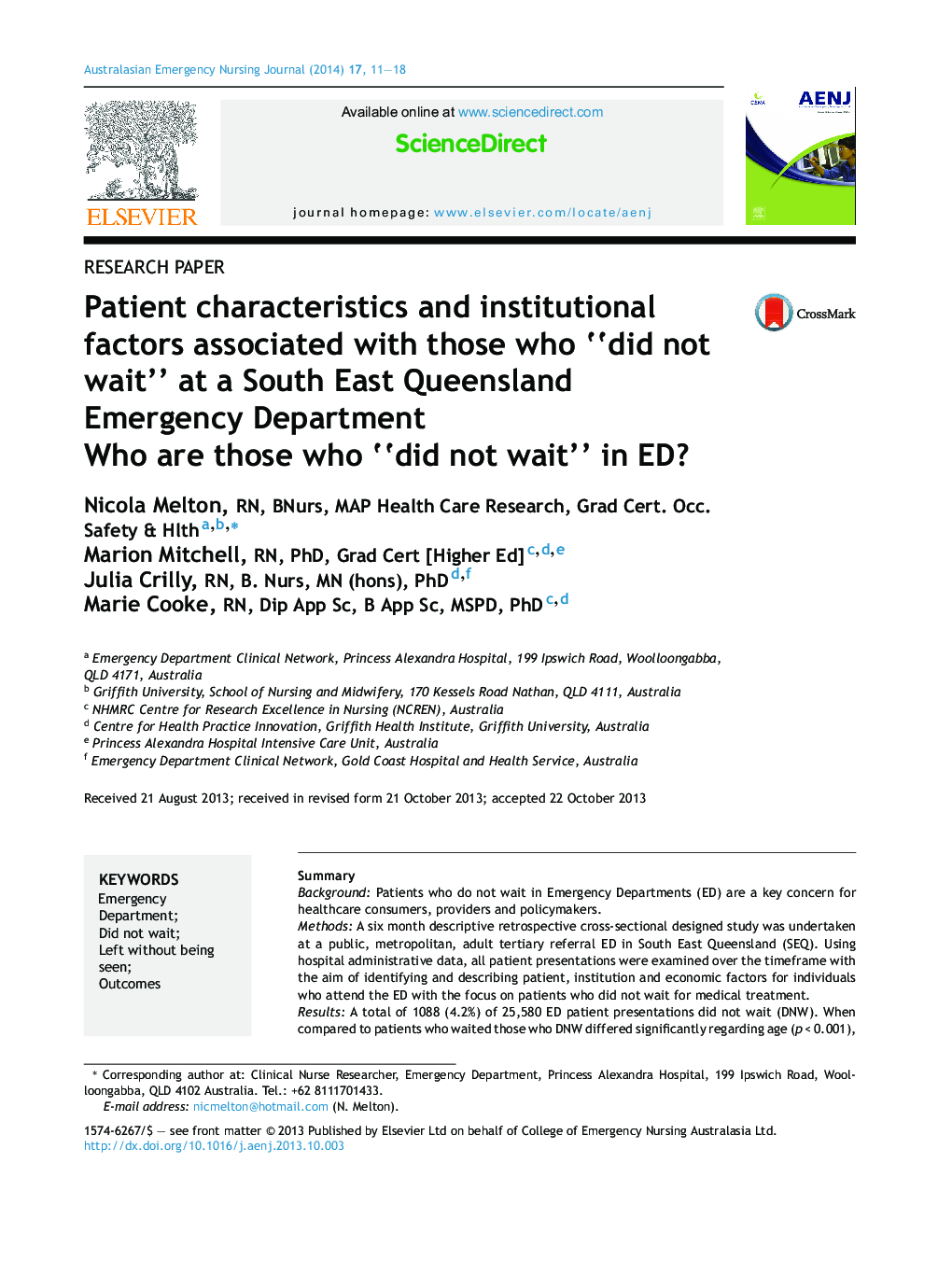| Article ID | Journal | Published Year | Pages | File Type |
|---|---|---|---|---|
| 2606335 | Australasian Emergency Nursing Journal | 2014 | 8 Pages |
SummaryBackgroundPatients who do not wait in Emergency Departments (ED) are a key concern for healthcare consumers, providers and policymakers.MethodsA six month descriptive retrospective cross-sectional designed study was undertaken at a public, metropolitan, adult tertiary referral ED in South East Queensland (SEQ). Using hospital administrative data, all patient presentations were examined over the timeframe with the aim of identifying and describing patient, institution and economic factors for individuals who attend the ED with the focus on patients who did not wait for medical treatment.ResultsA total of 1088 (4.2%) of 25,580 ED patient presentations did not wait (DNW). When compared to patients who waited those who DNW differed significantly regarding age (p < 0.001), triage category (p < 0.001), mode (p < 0.001) and shift of arrival (p < 0.001). Patients who DNW were younger, assigned less urgent triage categories and presented in higher proportions by private transport, during evenings and overnight. Some (n = 550) were incorrectly coded as DNW when they actually waited, but left after treatment commenced. The crude cost of incorrectly coding these patients amounted to >$160,000.ConclusionsUnderstanding the characteristics of patients who DNW enables strategies to be considered and implemented to manage and mitigate both the potential clinical risk to patients and the financial implications for health care institutions.
